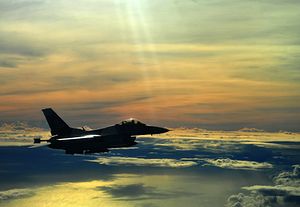The Indian Ministry of Defense (MOD) has recently issued a Request for Information (RFI) to global aircraft manufacturers alerting international suppliers that there will be a new competition for the building of a new single-engine fighter aircraft under Indian Prime Minister Narendra Modi’s “Make in India” initiative.
The RFI will be followed by a detailed Request for Proposal (RFP) inviting aircraft makers to submit proposals including detailed technology transfer plans, historically one of the most difficult aspects of any defense deal in India.
The Indian Air Force is in need of approximately 300 new medium weight combat aircraft.
According to Indian Air Force (IAF) chief Arup Raha, India has already received “unsolicited offers” from Lockheed Martin, Boeing, and Saab to build the Lockheed Martin F-16 Block 70, Boeing F/A-18 Super Hornet, and Saab Gripen E fighter jet in India.
“This is very much on the table and I’m sure whoever gives the best deal [will win]. All the aircraft are very capable, so it will depend upon who provides the best transfer of technology; and, of course, the price tag. It’s on the table; nothing is decided as yet,” Raha told the Business Standard.
“This will not be just licensed manufacture. It will be proper transfer of technology. Also, India will become a hub for manufacturing, as well as maintenance, repair and overhaul (MRO) for other air forces in the region,” he added.
As I explained previously:
U.S. defense contractors Boeing and Lockheed Martin[next to other aircraft makers], along with their F-16 and F-18 aircraft, were outbid in 2011 under the now-scrapped $20 billion MMRCA (medium multi-role combat aircraft) project by French aircraft maker Dassault Aviation, with India opting for Dassault Aviation’s Rafale fighter instead in January 2012. However, the MMRCA project was cancelled after years of difficult negotiations in July 2015.
Instead, India and French aircraft manufacturer Dassault Aviation signed an agreement valued at 7.87 billion euros for the sale of 36 off-the-shelf Dassault Rafale twin-engine aircraft in September.
Saab has been involved in talks with Indian state-run aircraft maker Hindustan Aeronautics Limited (HAL) to collaborate on the upgraded version of the indigenously developed Tejas Light Combat Aircraft (LCA), dubbed the Tejas Mark-IA.
“We should be able to start production of this aircraft by 2020-21; and in another five-seven years [i.e. by 2025-28], we’ll have 80 Tejas Mark 1A fighters,” according to Raha.
The IAF plans to induct a total of 20 Tejas Mark-I aircraft by early 2018, but the program has been hampered by repeated delays and the MoD’s recent RFI makes it clear that the IAF will not solely rely on the Tejas LCA to replace its aging fleet of MIG-21 fighter jets.
The first Tejas squadron will consist of the aircraft’s less advanced Mark-I variant with “initial operational certification (IOC),” according to Raha. “So in another year and a half’s time, we will have a full squadron of LCA’s – the IOC version,” he said.
Raha also said that the “final operational certification” (FOC) of the Tejas was looming. “I’m sure in another five-six months FOC would be cleared and production will start as soon as [HAL] finishes producing the IOC version. So we expect that the FOC version [of the Tejas] will be operationalized in an IAF fighter squadron in another three years time.”

































